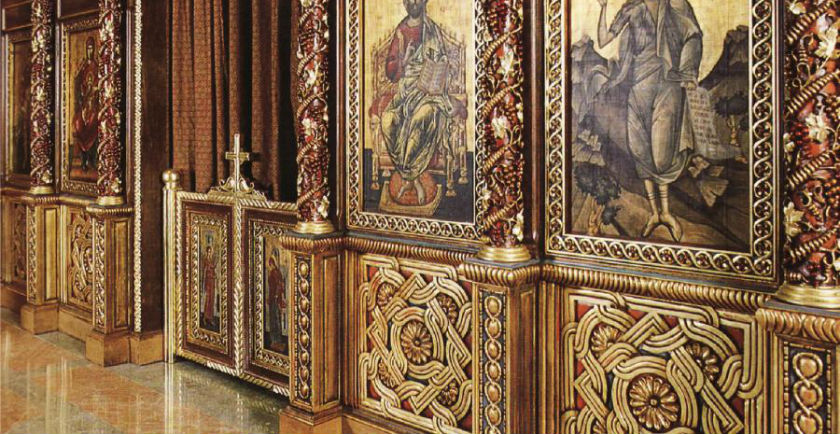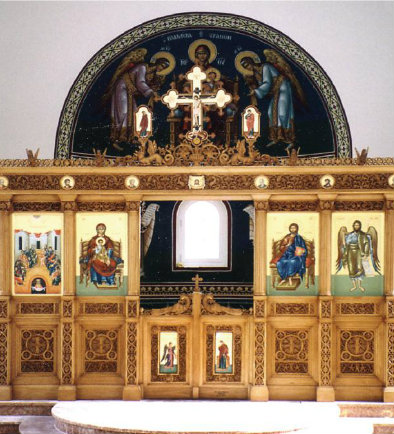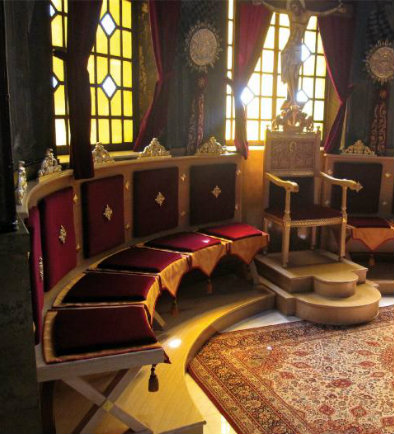Ecclesiastical Wood Carving
The art of carving and sculpture were some of the oldest human activities. Thousand years ago human beings had found the way to work with different materials, including wood by giving it various shapes. As the years went by and with the civilization progress, woodcarving became a need of expression and creation, and the artist's role was and is, to interpret life and imprison the moment by giving them a steady shape....
... a need of expression and creation, and the artist's role was and is, to interpret life and imprison the moment by giving them a steady shape. Today there are only few carvers who continue to work on the Temples decoration, by saving and continuing the tradition and enriching the art of woodcarving with Modern Greek elements. Though this ancient art remains a classic manifestation of the Greek aestheticism.



